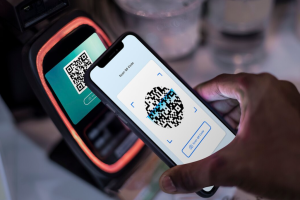
Introduction:
The taxi industry, once synonymous with cash transactions, has undergone a transformative shift with the advent of digital payment technologies. This article delves into the multifaceted evolution of payment methods in taxis, exploring the benefits for both passengers and operators while addressing the challenges and envisioning the future landscape.
The Evolution of Payment Methods:
Traditional cash transactions, while straightforward, posed challenges for both passengers and taxi drivers. The introduction of digital payment methods has revolutionized the entire payment ecosystem. Now, passengers can seamlessly pay for their rides using credit/debit cards, mobile wallets, or contactless options, ushering in a new era of convenience.
Benefits for Passengers:
Convenience and Speed:
- Digital payments have revolutionized the passenger experience by offering unparalleled convenience and speed. Gone are the days of fumbling for exact change or waiting for the driver to process the transaction. With a simple tap or scan, passengers can effortlessly settle their fare, making the entire process smoother and more efficient.
Enhanced Security:
- Digital transactions bring an added layer of security. Advanced encryption technologies and robust fraud protection mechanisms ensure that passengers’ financial information remains secure. This newfound sense of security contributes significantly to passengers’ peace of mind during their journeys.
Tracking and Transparency:
- Passengers now can track and review their transaction history with ease. The transparency provided by digital payment methods fosters trust between passengers and taxi services. Additionally, a clear record of expenditures proves beneficial for personal budgeting or business expense reporting.
Benefits for Taxi Operators:
Reduced Cash Handling:
- For taxi operators, the transition to cashless transactions translates into reduced cash handling. This not only minimizes the risk of theft or robbery but also streamlines accounting processes, freeing up valuable time and resources.
Efficient Payment Processing:
- Digital payments streamline payment processing for taxi operators, reducing the time spent on transactions at the end of each ride. This increased efficiency allows taxi services to cater to more passengers, ultimately boosting revenue and overall operational effectiveness.
Improved Revenue Collection:
- With digital payment methods, taxi operators can ensure more accurate revenue collection. The elimination of cash-related discrepancies reduces the likelihood of underreporting, contributing to a fair and transparent financial ecosystem.
Challenges and Solutions:
Connectivity and Technological Barriers:
- While the benefits of digital payments are evident, challenges such as connectivity issues and technological barriers persist. Taxi companies are actively investing in user-friendly payment terminals and ensuring widespread access to reliable network connectivity to address these challenges effectively.
Resistance to Change:
- Resistance to change is a common challenge when introducing new technologies. Taxi companies are combating this by implementing educational initiatives, ensuring both passengers and drivers are well-versed in the advantages of cashless transactions and the ease of adopting new payment methods.
The Future of Cashless Convenience in Taxis:
Looking ahead, the future of cashless convenience in taxis holds promise. Emerging technologies like near-field communication (NFC), biometric authentication, and blockchain are on the horizon. These innovations are set to further enhance security, streamline transactions, and provide an even more seamless and technologically advanced payment experience for all stakeholders.
Conclusion:
The rise of digital payments in taxis represents a paradigm shift in the transportation industry. Beyond the immediate benefits of convenience and security, it aligns with the broader global trend toward a cashless society. As technology continues to shape the future of transportation, the integration of digital payment methods stands as a cornerstone, reshaping the passenger experience and setting new standards for efficiency, security, and innovation in the taxi industry.





